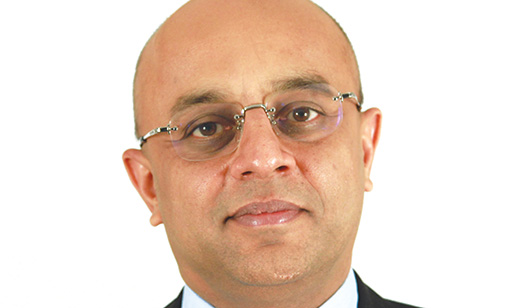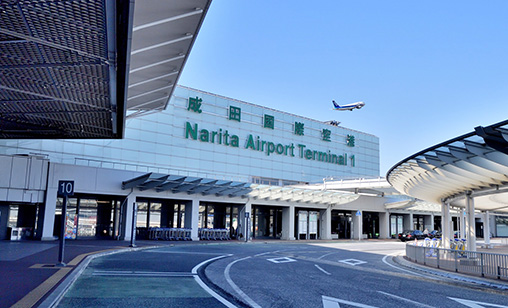Main Story
Industry winners and losers in post-covid staff planning
From ground handlers to security staff, cleaners to air traffic controllers, almost all types of airport workers are in strong demand in the Asia-Pacific’s tightest labour market in years. The question is: as air traffic drives upwards to pre-pandemic levels and beyond, will the region’s airports be able to handle the pressure?
April 1st 2023
When it comes to airports, Vinoop Goel, the International Air Transport Association (IATA) Asia-Pacific Regional Director of Airports & External Relations, told Orient Aviation “we need to be prepared and be ahead of the game”. Read More »
 |
“We have been actively working with airports and governments in the Asia-Pacific, telling them that number one they need to have a robust traffic forecast. Everything starts with a robust traffic forecast,” Goel said.
Today, an airport may be seeing 30% or 40% of its pre-pandemic traffic and saying it has no staffing issues and no condition issues. “But if the traffic forecast says the borders are going to open next month and in two months you could be up to 80%, they better make sure they have a plan in place to have the infrastructure ready at an airport,” Goel said. “That’s number one. Number two is to have staffing. If you don’t have staffing see what else can be done.”
Goel’s analysis underscores the fact some airports have been caught short by the pace of the post-pandemic recovery. For example, having lost almost half of its 33,000 strong workforce during COVID, Sydney airport has been trying to rebuild.
Late last year and early this year, its shortfalls sparked chaos, leading to a high number of flight delays and cancellations.
Singapore’s Changi Airport began looking for 6,600 new workers, from security to catering staff, last year. One company providing security services at Changi, Certis Group, offered an $18,000 sign-on bonus, about 10 times the basic monthly salary, for an auxiliary police officer role that would help with traffic and crowd control.
Some of the region’s major airlines have handled the recovery of traffic well and Australia and Singapore are not alone in suffering staff shortages. There have been manpower issues in Thailand, Japan and the Philippines.
IATA’s Goel told Orient Aviation the staffing issue can be viewed in two ways. “One is the immediate staffing shortage as traffic recovers, which I almost call emergency short-term staffing requirements. And the other is the long-term traffic issues and the long-term issues were already there pre-COVID,” he said.
 |
The manpower shortfall comes under three pillars: airlines, security and ground handling. Security has been a big issue, he added, because it is a function contracted out by many airports. Replacing personnel who have left is not easy. Newcomers have to be properly trained and certified, a process that takes time, leading to delays. Ground handling, an area also contracted out, is another key area in the region, he said.
“An airport may not want to add flights when there is not enough ground handling capacity because that will lead to service breakdowns and queues. Even if the infrastructure is there, the planes are there and the airline staffing is there.”
What is known is some airports, such as Changi and others in Japan, have been refusing to allow airlines to add flights, calibrating demand with their ability to handle additional traffic.
Nevertheless, Goel said the region has done much better than elsewhere in the world because, as of December, traffic levels were around 57% of pre-COVID levels; with international at 52% and domestic at 63%.
“Because of this, we are not seeing that pressure on the system in many cases. In the Asia-Pacific we have been quite fortunate because some governments have stepped in and ensured they have subsidized airports, or ensured there have been no staff departures from aviation. Examples are the staffing support packages given by Singapore and Japan. There also have been other [rescue] packages,” he said.
As for airports themselves - Asia-Pacific airports lost an estimated $41 billion in revenue in 2021 and 2022 - they are aware of the issues and fighting to recover. ACI Asia-Pacific (Airports Council International) president, Emmanuel Menanteau, who represents Cambodia Airports as a board director, said that from a big picture perspective, there is a plethora of problems hampering the sustainable recovery of the industry.
“They include revenue shortfalls impacting infrastructure expansion programs and regulatory framework and manpower constraints. Indeed, there is no disputing the pandemic led to a rapid deterioration in the financial health of the airport industry. As a result, the industry has witnessed a significant manpower crunch. Aviation jobs are no longer competitive for job seekers and the sector as a whole is facing competition from several other industries in a tight labour market.”
To address this critical challenge, ACI Asia-Pacific has called on governments to work closely with industry stakeholders to identify solutions aimed at alleviating workforce shortages at airports and develop a roadmap to make airport employment more attractive and competitive in the long-term.
“The competitive and economic landscape of the airport industry and the aviation ecosystem has changed dramatically in the last three decades. The airport business requires flexible policy measures capable of restoring equilibrium and stimulating a sustainable recovery from the pandemic and ensuring that longer-term targets of sustainability, infrastructure development and service quality are duly met,” Airports Council International said.
megan moroney says:
January 27th 2024 01:10pm